I’ve told you before that I’m an almond skeptic. It’s true that I was won over by the little frangipane tart. But when it comes to marzipan, I’m worse than Sam I Am: I do not like it. Not in a train, on a plane, or anywhere. But while I may not eat marzipan, making roses with it for cake decorations is really fun.
Here’s how the best of them looked in pastry class last night:
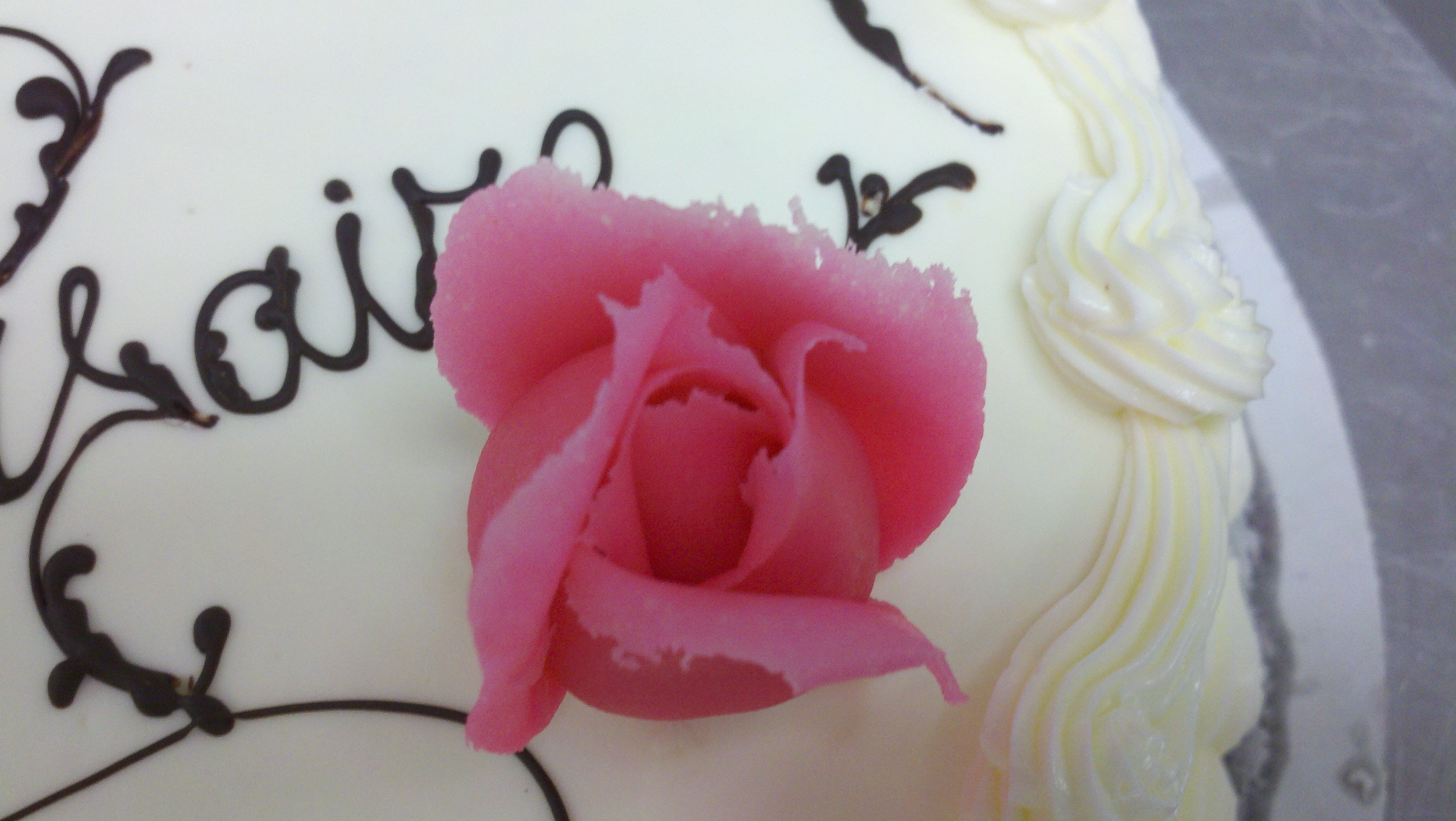 Yeah, it looks really good because Chef Claude made it. Here’s the pathetic one I made, on the left, below:
Yeah, it looks really good because Chef Claude made it. Here’s the pathetic one I made, on the left, below:
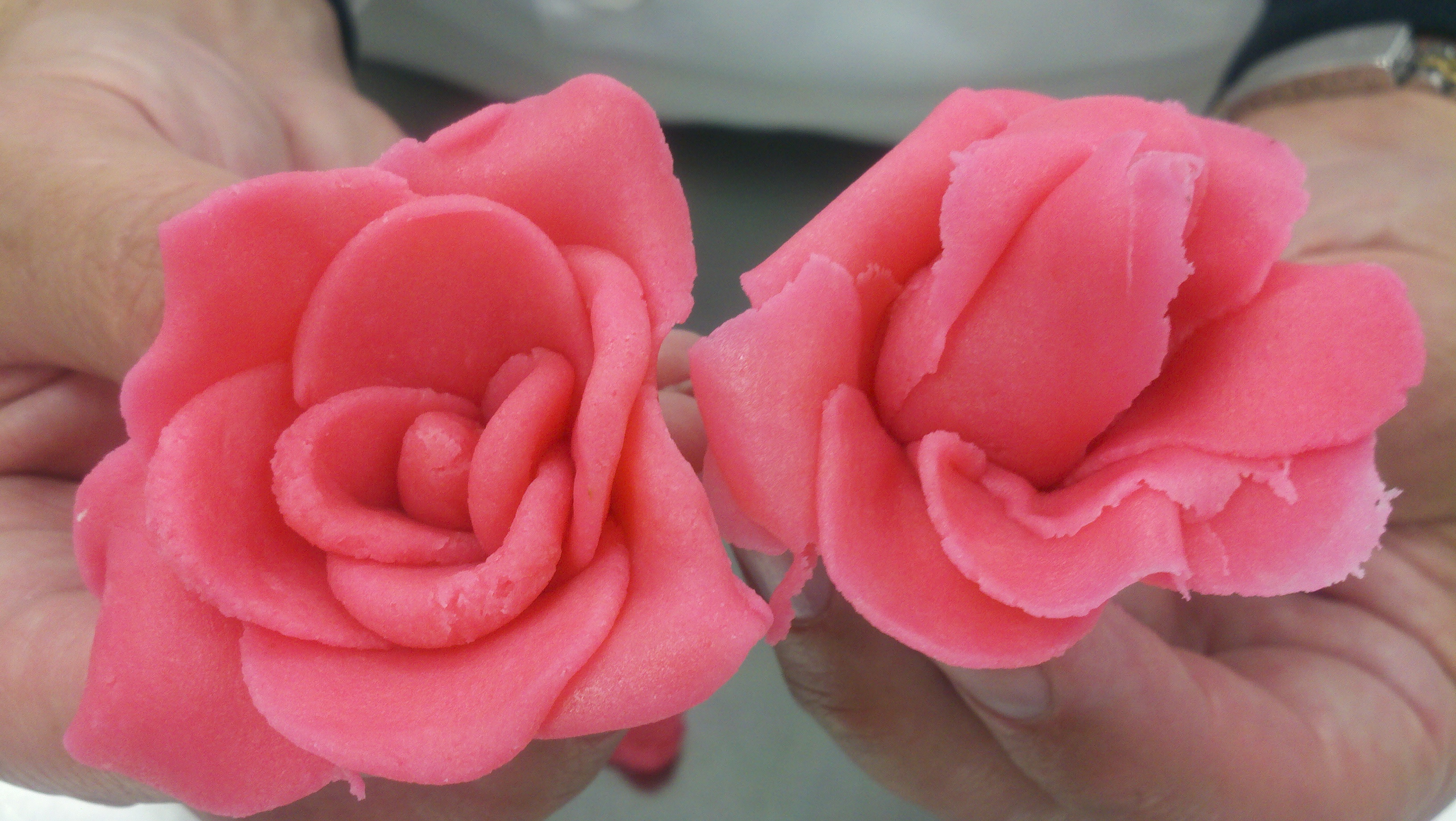 The one on the right was made by my pastry partner, Michael Edwards, who professes to be much more of a savory guy than a sweet one, but he did really nicely on this marzipan flower. I, on the other hand, who tilt so heavily to the sweet side of the kitchen that I practically topple over, made a rose with the plumpest damn petals you ever saw. Sort of like an Alice in Wonderland rose on steroids. [If I could insert sound bites here, I’d put in an audible sigh.]
The one on the right was made by my pastry partner, Michael Edwards, who professes to be much more of a savory guy than a sweet one, but he did really nicely on this marzipan flower. I, on the other hand, who tilt so heavily to the sweet side of the kitchen that I practically topple over, made a rose with the plumpest damn petals you ever saw. Sort of like an Alice in Wonderland rose on steroids. [If I could insert sound bites here, I’d put in an audible sigh.]
This marzipan adventure was part of our cakes-and-buttercreams unit in Pastry Techniques class at L’Academie de Cuisine. You might remember that last week we baked layers of yellow cake and made gorgeous buttercream, and stashed those in the freezer while we experimented a little with writing in warm chocolate. This week, we were to assemble the thawed cakes and buttercream, and spend a little more time on decor. (We also made lemon-basil ice cream to die for.)
We learned how to get frozen buttercream back to the user-friendly state, and it turns out to be easy: put it in the bowl of your stand mixer, over a pan of simmering water. When it softens a bit, put it back under the mixer whip and beat it until it’s nice and shiny and pliable.
We also learned how to make a very elegant-looking chocolate glaze from a simple ganache. (Remember ganache? We filled the yellow cake with it last week. Sixteen ounces of heavy cream, heated to steaming in a saucepan, and 16 ounces of chopped bittersweet chocolate, which is dumped into the hot cream and stirred smooth once it’s softened. When cooled, it can be used for a whole array of fillings, frostings and sauces.) If you add simple syrup or corn syrup to ganache, it gives it an elegant gloss. Here’s how it looked poured over a chocolate sour cream cake Chef made in class:
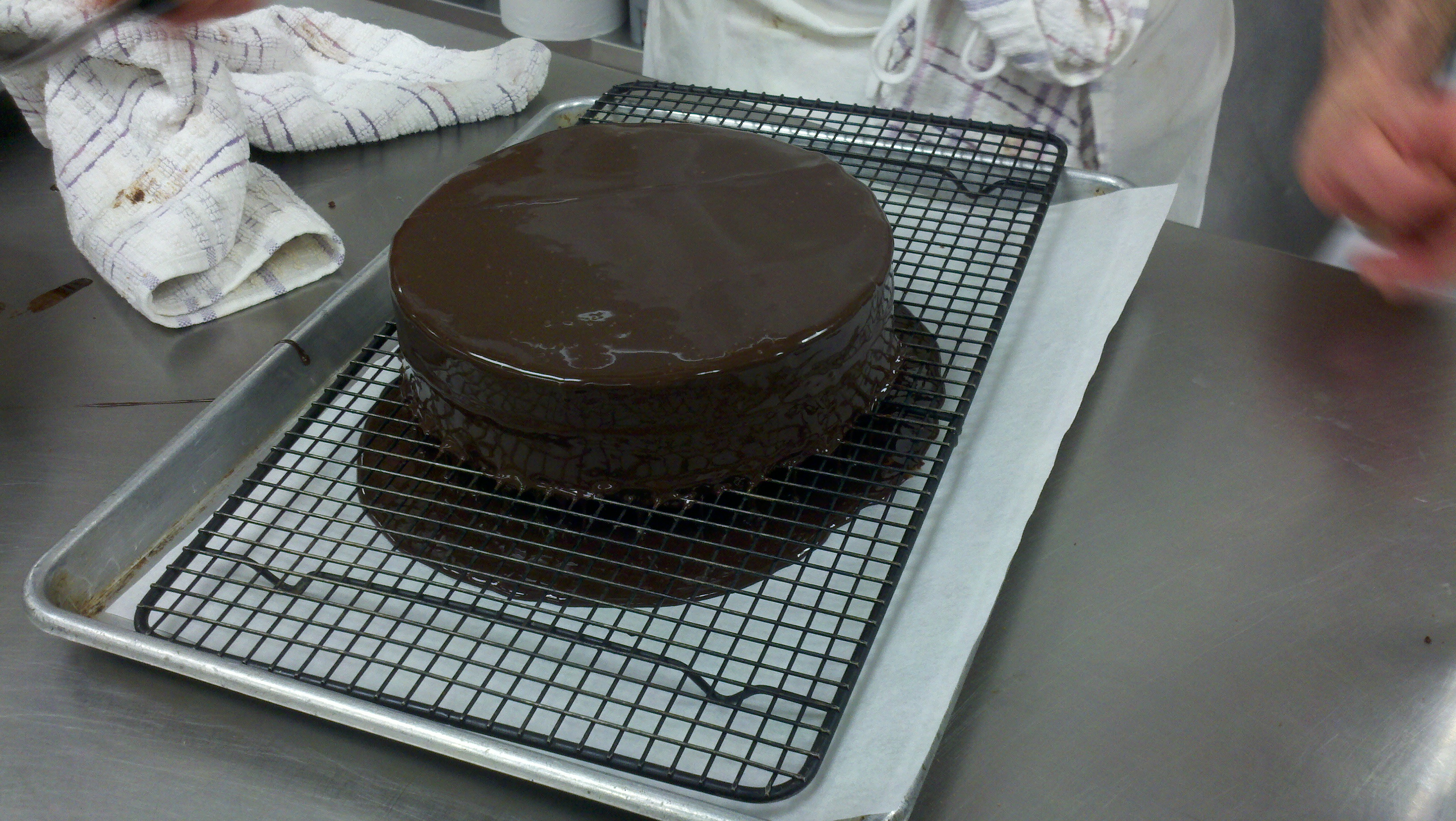 Once he performed another of his less-than-a-minute decorating miracles with melted white chocolate, here’s the result:
Once he performed another of his less-than-a-minute decorating miracles with melted white chocolate, here’s the result: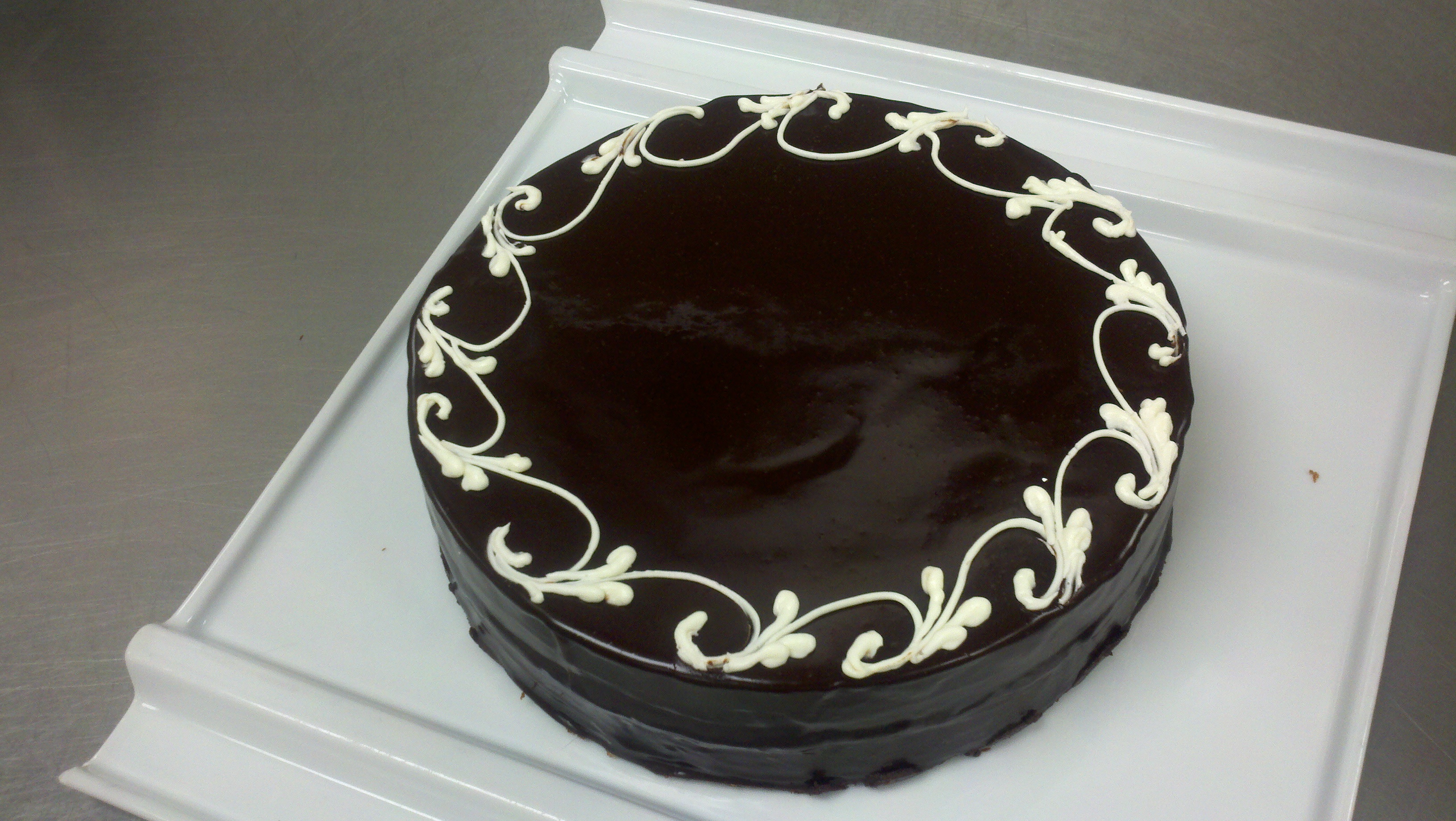 But I’m sure you want to know how we did those marzipan roses. Imitating what Chef Claude showed us, we began by rolling a skinny log.
But I’m sure you want to know how we did those marzipan roses. Imitating what Chef Claude showed us, we began by rolling a skinny log. 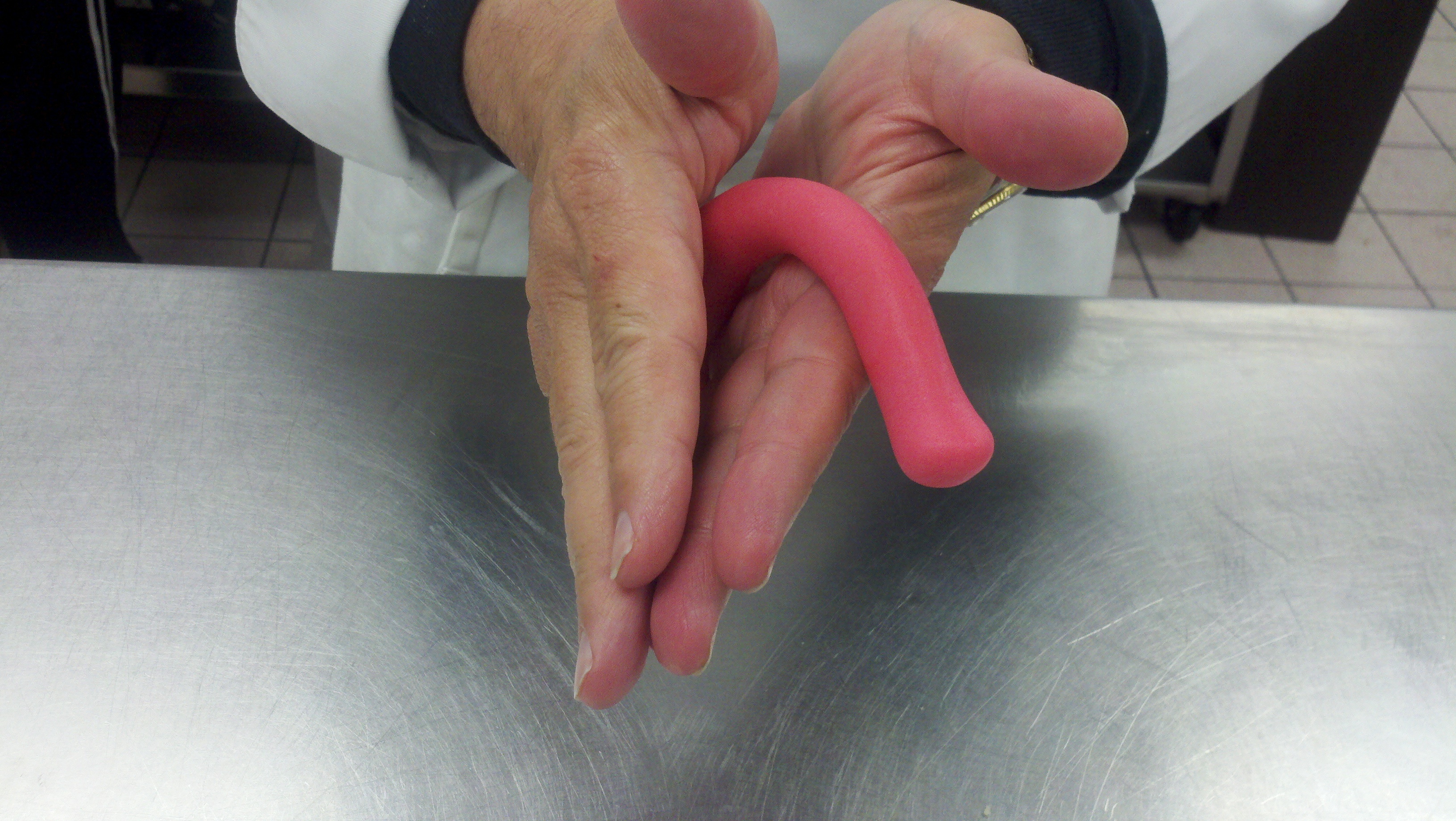 Then we cut the log into half-inch-long segments, and mashed each one with our thumbs.
Then we cut the log into half-inch-long segments, and mashed each one with our thumbs.
 Using our soft, white plastic bowl scrapers, we pressed on the upper edge of the mashed marzipan circle and drew the scraper firmly down to the opposite edge, smearing the bright pink stuff on the countertop and creating one edge that is very thin.
Using our soft, white plastic bowl scrapers, we pressed on the upper edge of the mashed marzipan circle and drew the scraper firmly down to the opposite edge, smearing the bright pink stuff on the countertop and creating one edge that is very thin.
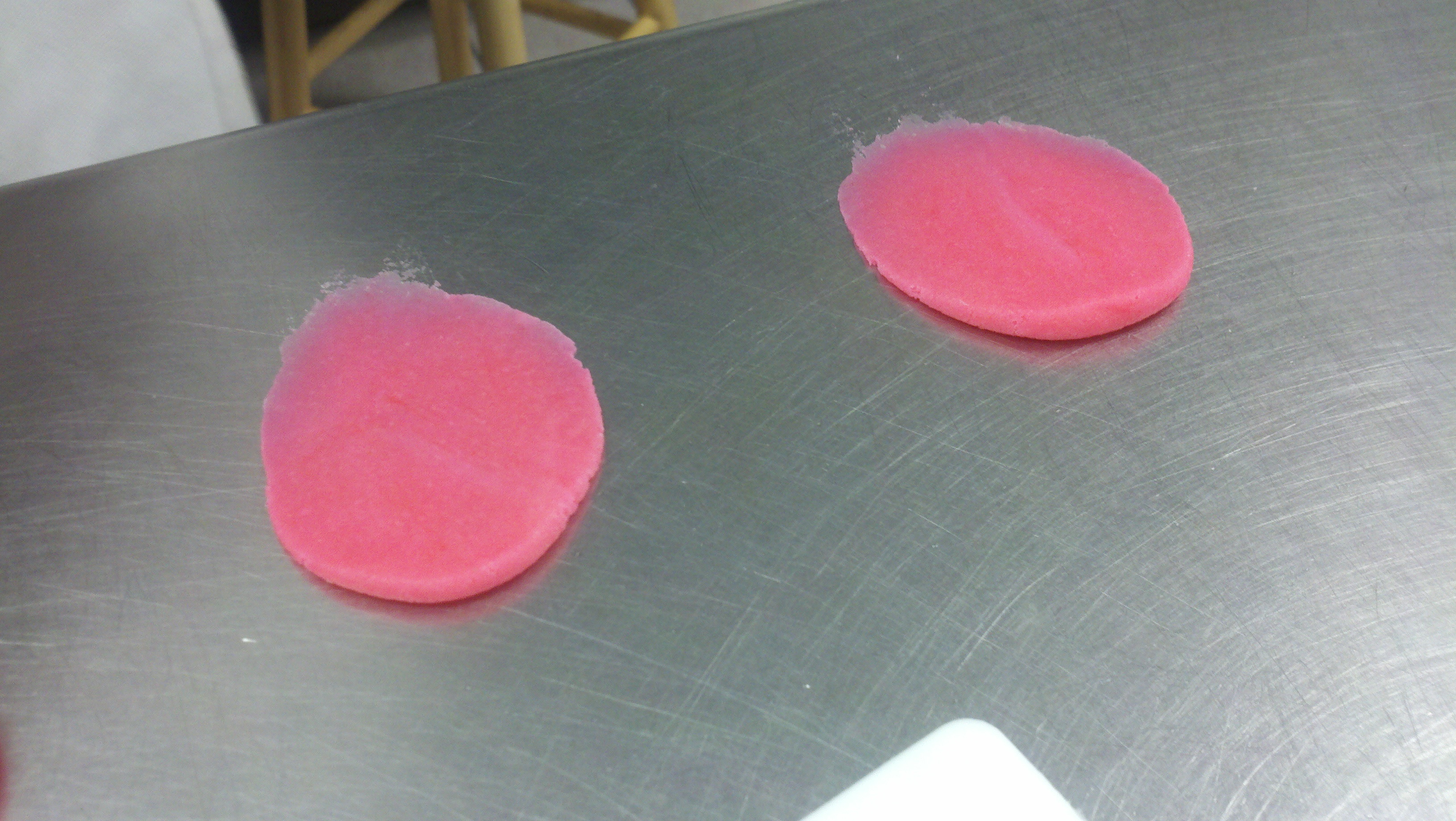 Out of another piece of marzipan, we fashioned a center for the rose.
Out of another piece of marzipan, we fashioned a center for the rose.
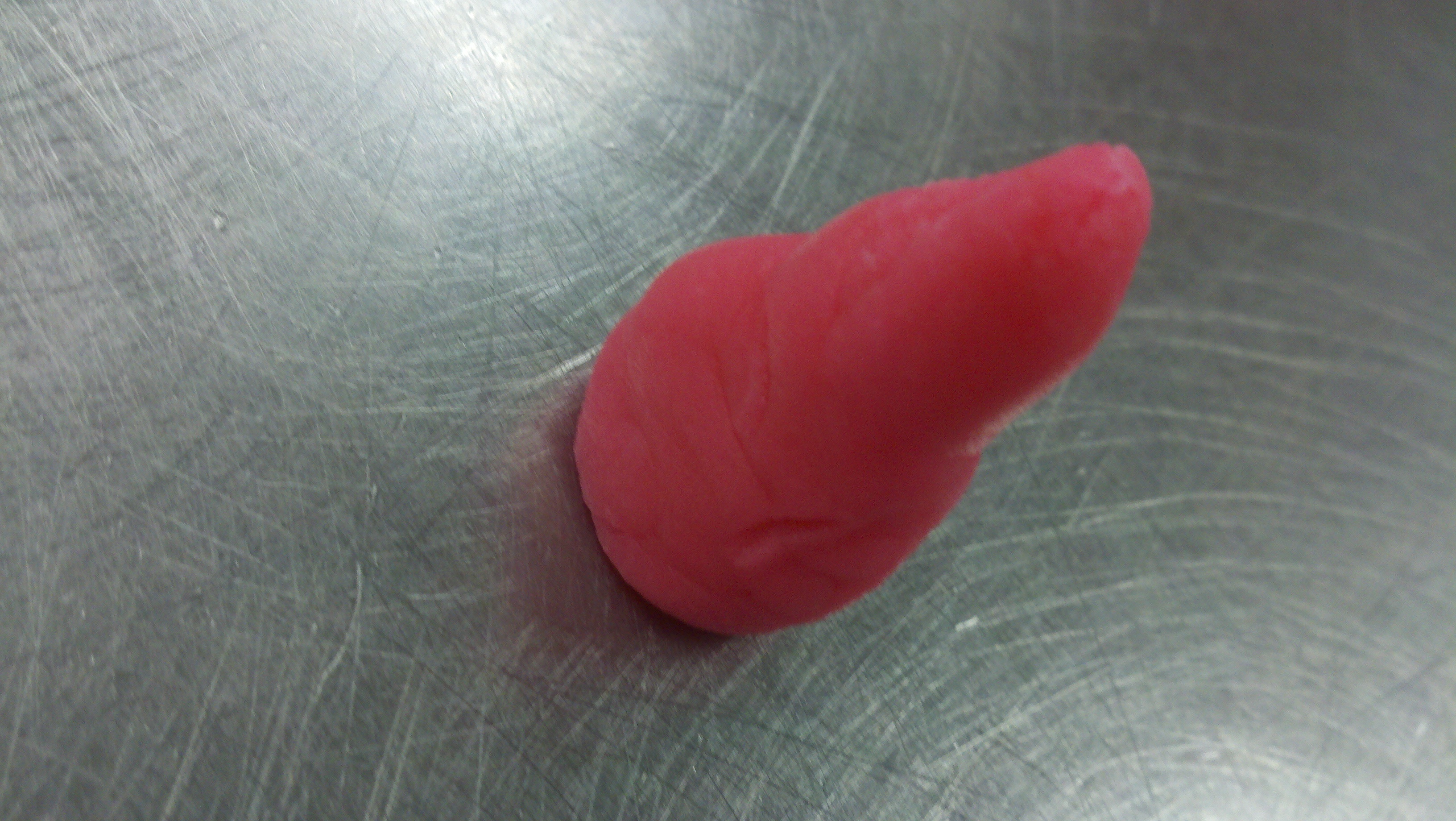
Then we began applying the petals, one by one, putting each one slightly higher on the center than the previous one.
You can see from the delicacy of the petals that this is Michael’s rose. Since I made the mistake of adhering the thinnest part of each petal to the center, leaving the thickest edge to show on top, my rose turned out unpleasantly plump:
Meanwhile, Michael buzzed along with the correct, thin edges of his petals pointing upward:
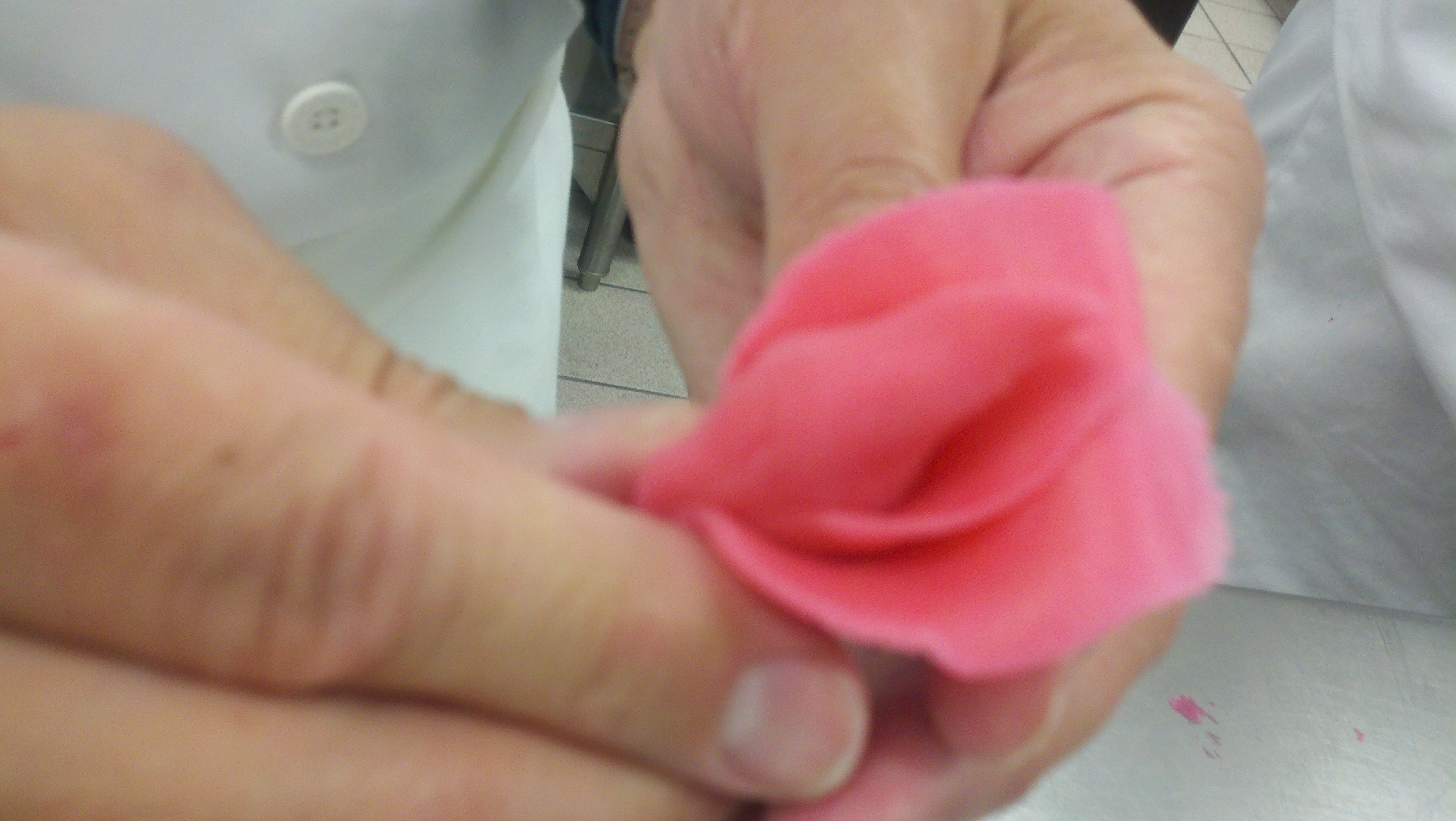 Well, you know how it turned out, since I showed you my rose right next to Michael’s up higher in this post. We had a lot of fun, though. And even my fat little rose got oooh’s and aaah’s when I brought it to the newsroom this afternoon, perched atop the yellow cake with buttercream that we put together last night. Check out a couple of the icing patterns we learned from Chef Claude:
Well, you know how it turned out, since I showed you my rose right next to Michael’s up higher in this post. We had a lot of fun, though. And even my fat little rose got oooh’s and aaah’s when I brought it to the newsroom this afternoon, perched atop the yellow cake with buttercream that we put together last night. Check out a couple of the icing patterns we learned from Chef Claude:
 See the little shells, at the bottom of the picture, and the I-don’t-know-what-you-call-it’s on the left? They’re expertly done on Chef Claude’s demo cake, where you can see one design around the top and another at the bottom edge:
See the little shells, at the bottom of the picture, and the I-don’t-know-what-you-call-it’s on the left? They’re expertly done on Chef Claude’s demo cake, where you can see one design around the top and another at the bottom edge:
 And so we concluded another yumptious evening of cakes and buttercream.
And so we concluded another yumptious evening of cakes and buttercream.
I wanted to include the buttercream recipe here, since Kathy, a devoted reader from Australia, requested it.
Italian Meringue Buttercream
16 oz. sugar
1/2 c. water
6 oz. egg whites
20 oz. unsalted butter, at room temperature, and cut into 1-inch pieces
1-2 tsp. vanilla
Combine 15 oz. of the sugar and water in a saucepan. Place a plate on top of the pan, so that when the mixture heats up, condensate hits the bottom of the plate and runs back into the pan, helping wash from the sides of the pan anything that might crystallize there. Put a medium-high heat under the sugar-water mixture.
Put the egg whites and remaining 1 ounce sugar into the bowl of a stand mixer, with the whip attachment.
When the sugar-water mixture comes to a boil, turn the mixer on medium speed to begin whipping the egg whites.
Check the sugar to see if it has reached soft-ball stage, and if it has, take it off the heat immediately, slow the mixer whip down a bit and pour the sugar syrup into the egg whites as they are beating, being careful to avoid pouring the hot sugar into the whip attachment.
You can determine whether the hot sugar has reached soft-ball stage two ways: by hand or by using a candy thermometer. Using the thermometer, look for a reading of 238 degrees. To do it by hand, have a cup of icewater nearby. Watch for the big bubbles of the boiling mixture to give way to smaller bubbles. When this happens, immerse your fingertips in the icewater for a few seconds, grab a little bit of boiling sugar from the pan, and plunge it immediately into the icewater. If the resulting ball is firm yet still pliable, it has reached soft-ball stage.
Once you have poured the sugar into the whipping egg whites, continue beating until the outside of the mixing bowl feels barely lukewarm to the touch.
Begin adding the softened butter, one piece at a time, but not pausing long between additions. When the butter has been fully incorporated, the buttercream is done.
If you wish to add flavorings, such as fruit purees, extracts or melted chocolate, now is the time.
The buttercream can be stored, covered, in the refrigerator for a week, or double-wrapped in plastic wrap and frozen for up to two months.
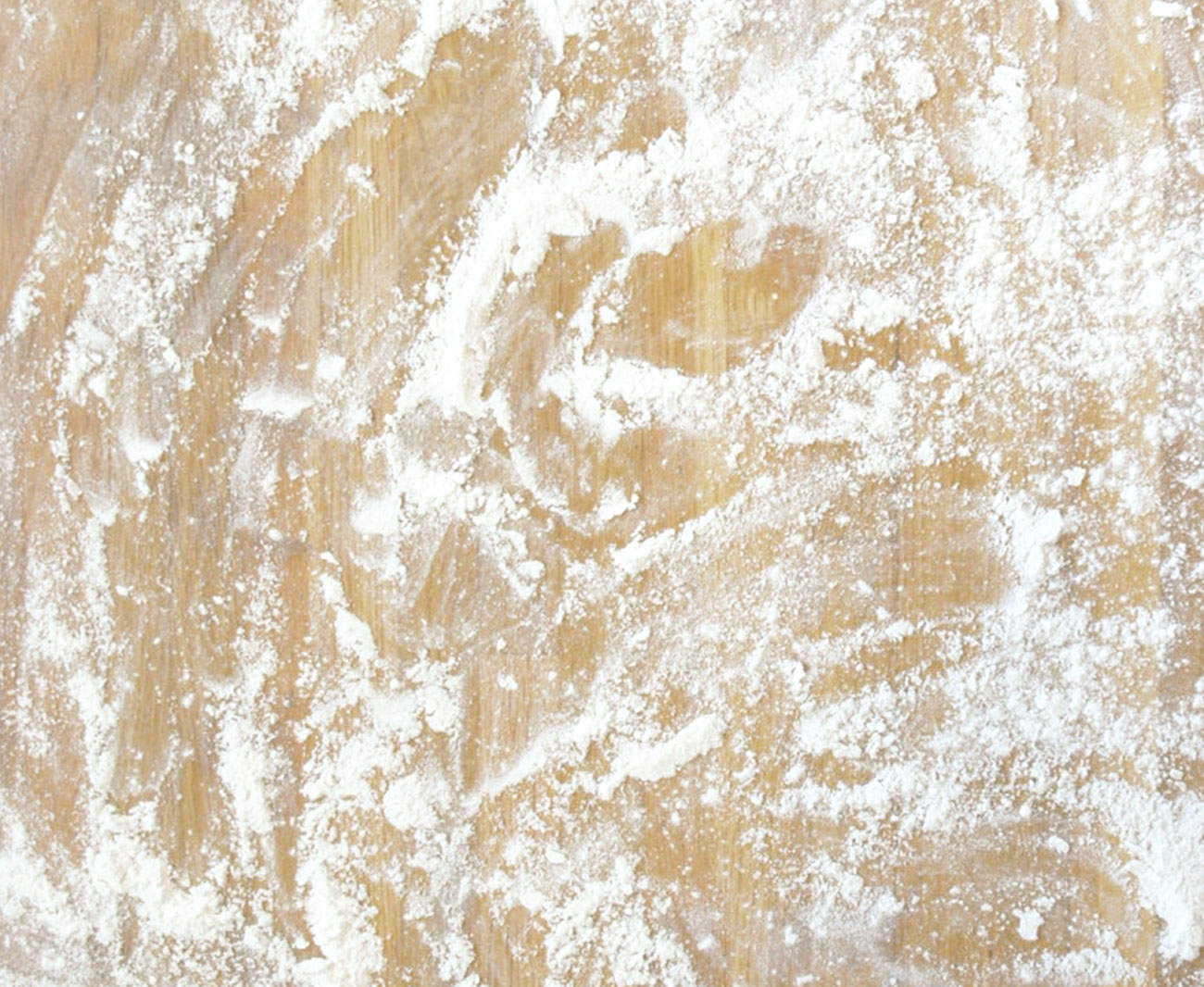
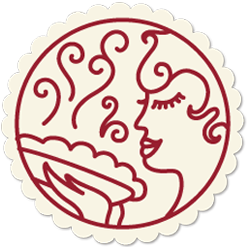
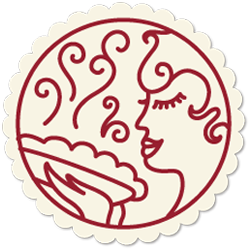

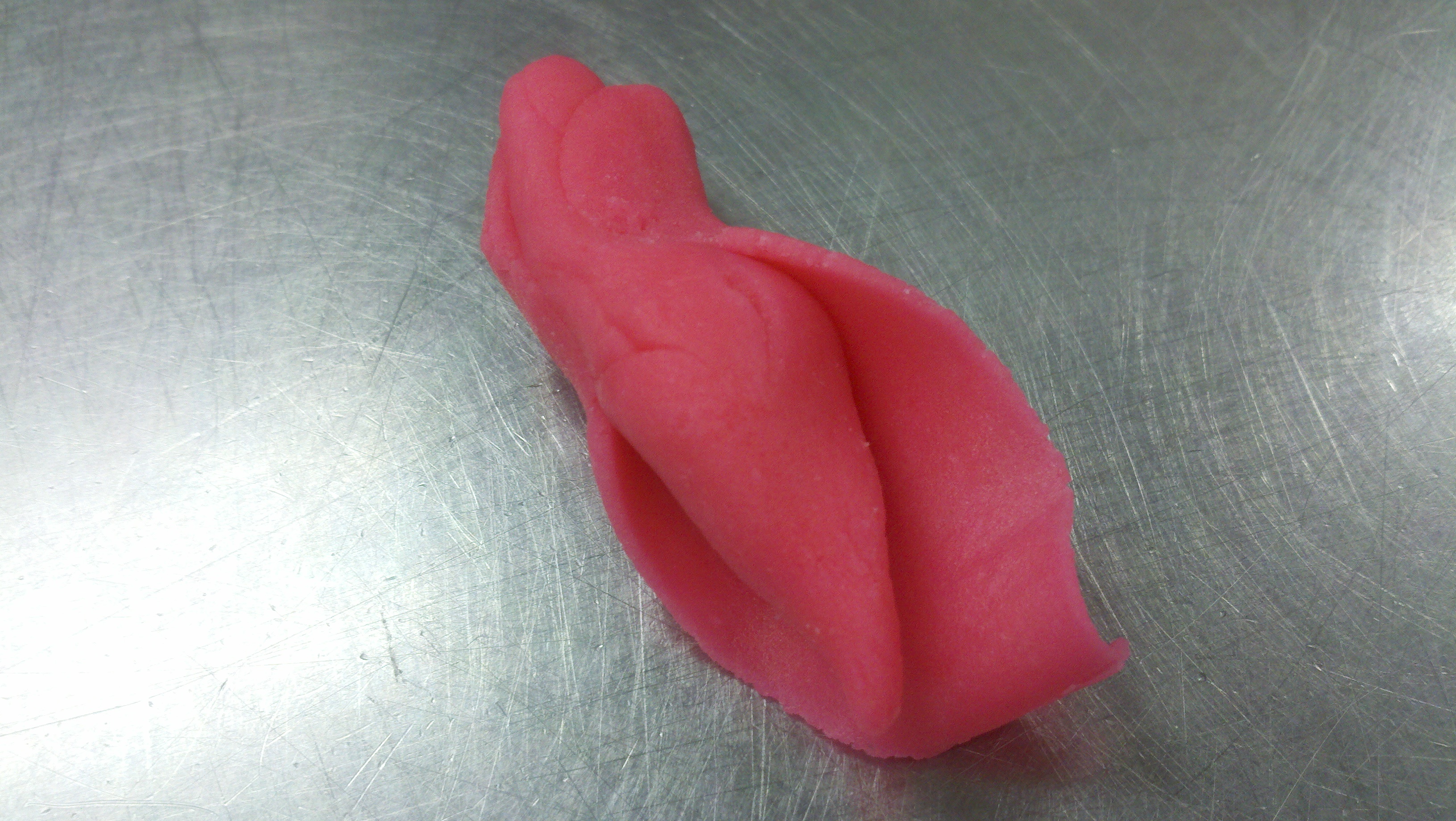

It was nice to meet you at class the other night!
Those little roses look super tough and that chocolate sour cream cake looks oh so good. Someone brought some of that lemon basil ice cream you all made to the CT 101 side, and it was soooooo delicious! I was scouring the internet the next day for lemon basil ice cream recipes.
Also, I wanted to share with you that I successfully made a pie this weekend. I made the Banana Cream Pie with Salty Bourbon Caramel from Bon Appetit (Feb 2012). I had a near disaster when I took the pastry cream out of the refrigerator and it looked more like creme anglaise than pastry cream. I was able to rescue it by cooking it down, adding some cornstarch mixed with milk, and refrigerating again. Once I got the pie together it was great. When I read the recipe reviews online, it seems everyone had the same problem. I was wondering if you have a better recipe for vanilla pastry cream for a cream-style pie that you would be willing to share?
Thanks!
Yet another incredible, visual treat…I so wish I’d been there for the office display of your cake.
Hi, Melissa! Can I tell you that I just had the EXACT SAME PROBLEM when I made pastry cream the other day? And I was panicked, because people were coming to eat that pie (and four others), and what had been nice and firm the night before was now pourable. AAACCKK! I improvised like you did. I took a two-pronged approach, not being sure if either would work: I scooped some pastry cream out into a small bowl and sprinkled a couple teaspoonsful of gelatin over it. When that was softened, I reintroduced it to the saucepan pastry cream. Likewise, I scooped out some pourable pastry cream and added cornstarch, and put that back into the pan. I brought this whole mixture up to a simmer, cooked it just a little bit, then put it in a bowl in the fridge with plastic wrap on the surface. Then, frankly, I prayed while I made backup plans (what kind of pie can I throw together on the chance this is a disaster??). Thank goodness, the custard firmed up, and I presented my honey-vanilla cream pie with gingersnap crust, and it was gone in no time. Whew! I have had varied experiences with pastry cream; some too stiff and some too goopy. I am happy to post what I have, or send them by email if you shoot me an email: curvymamapies@gmail.com.
Thanks for the buttercream recipe! My girls and I will give it a try next weekend.